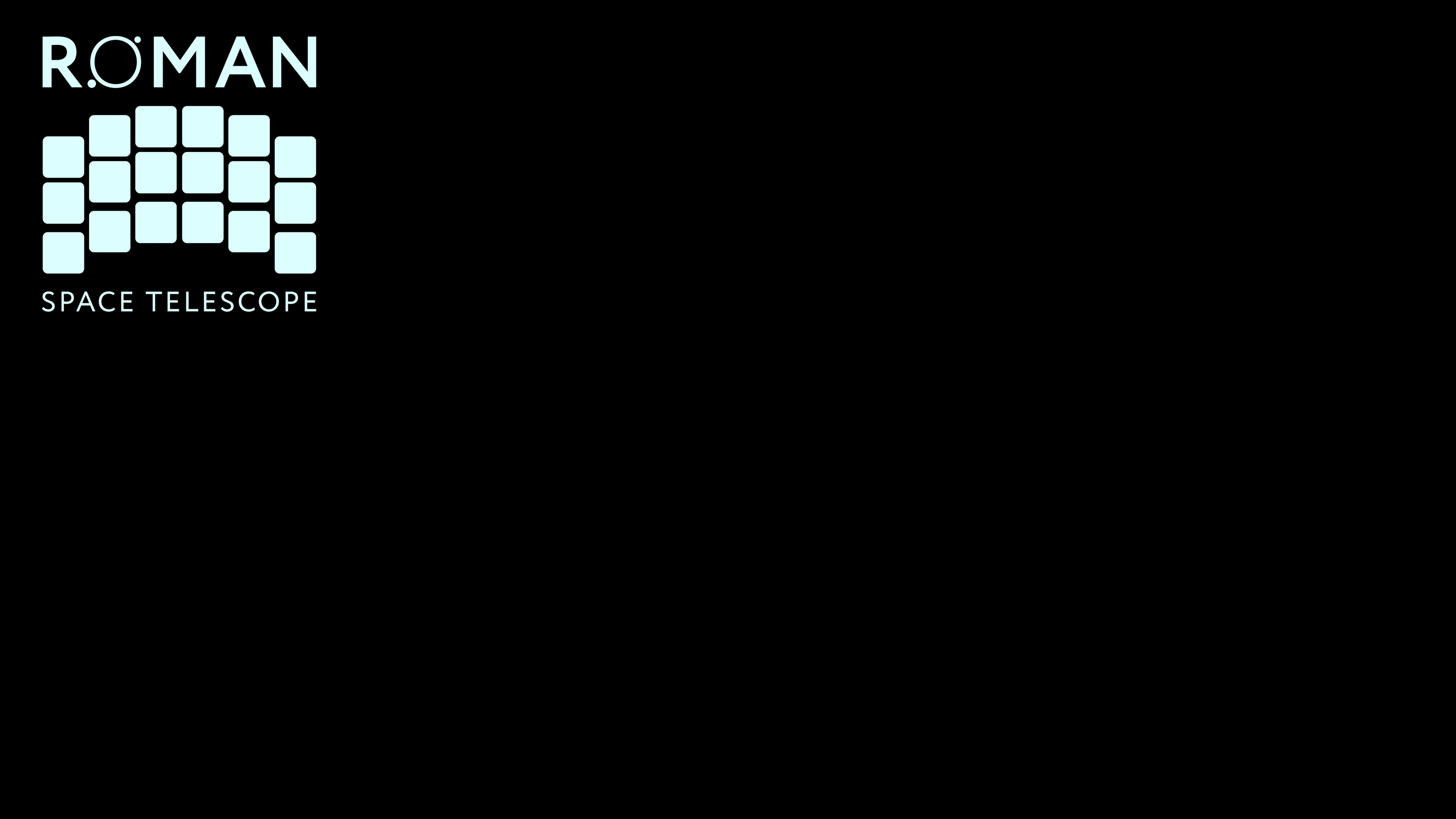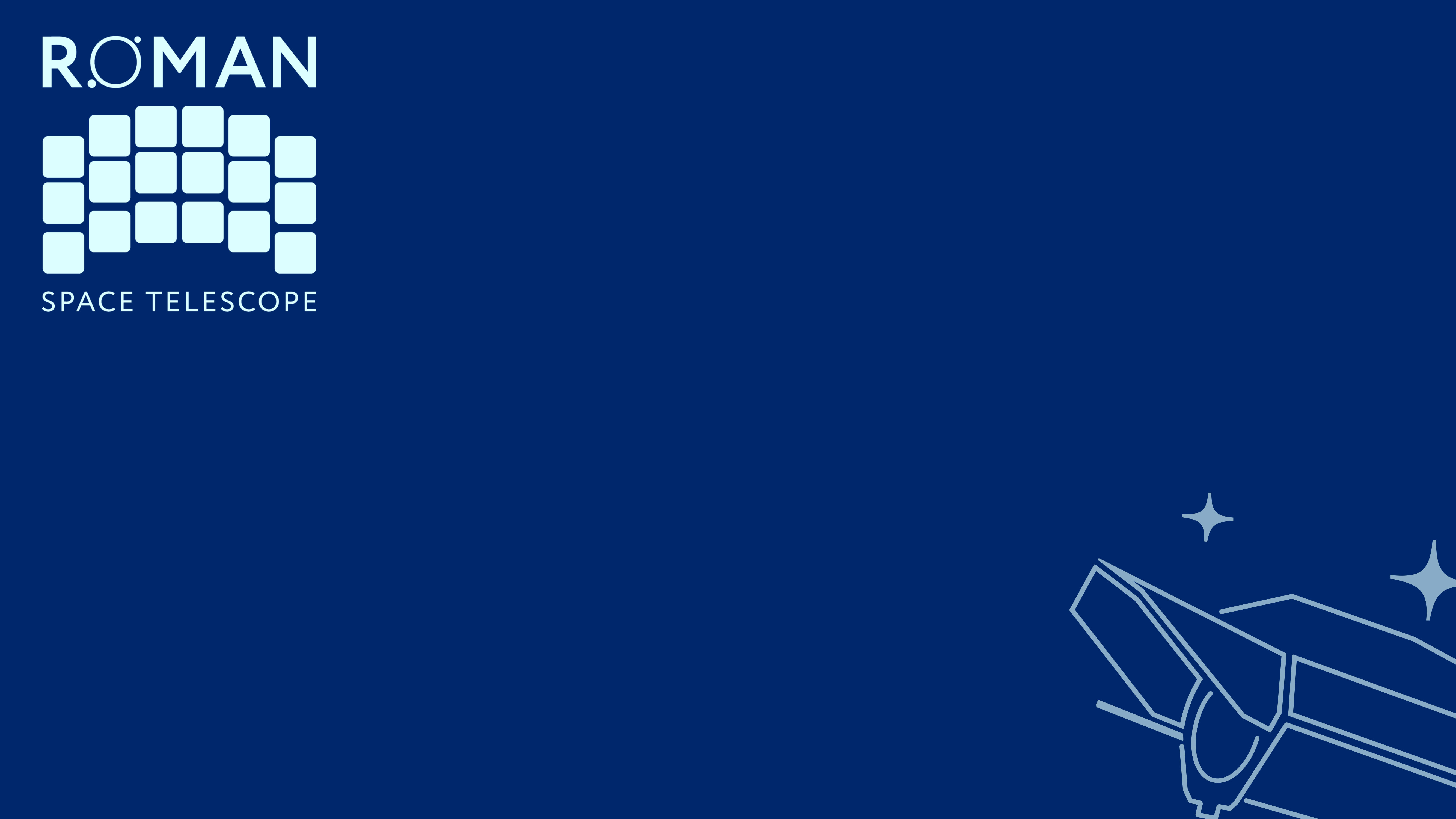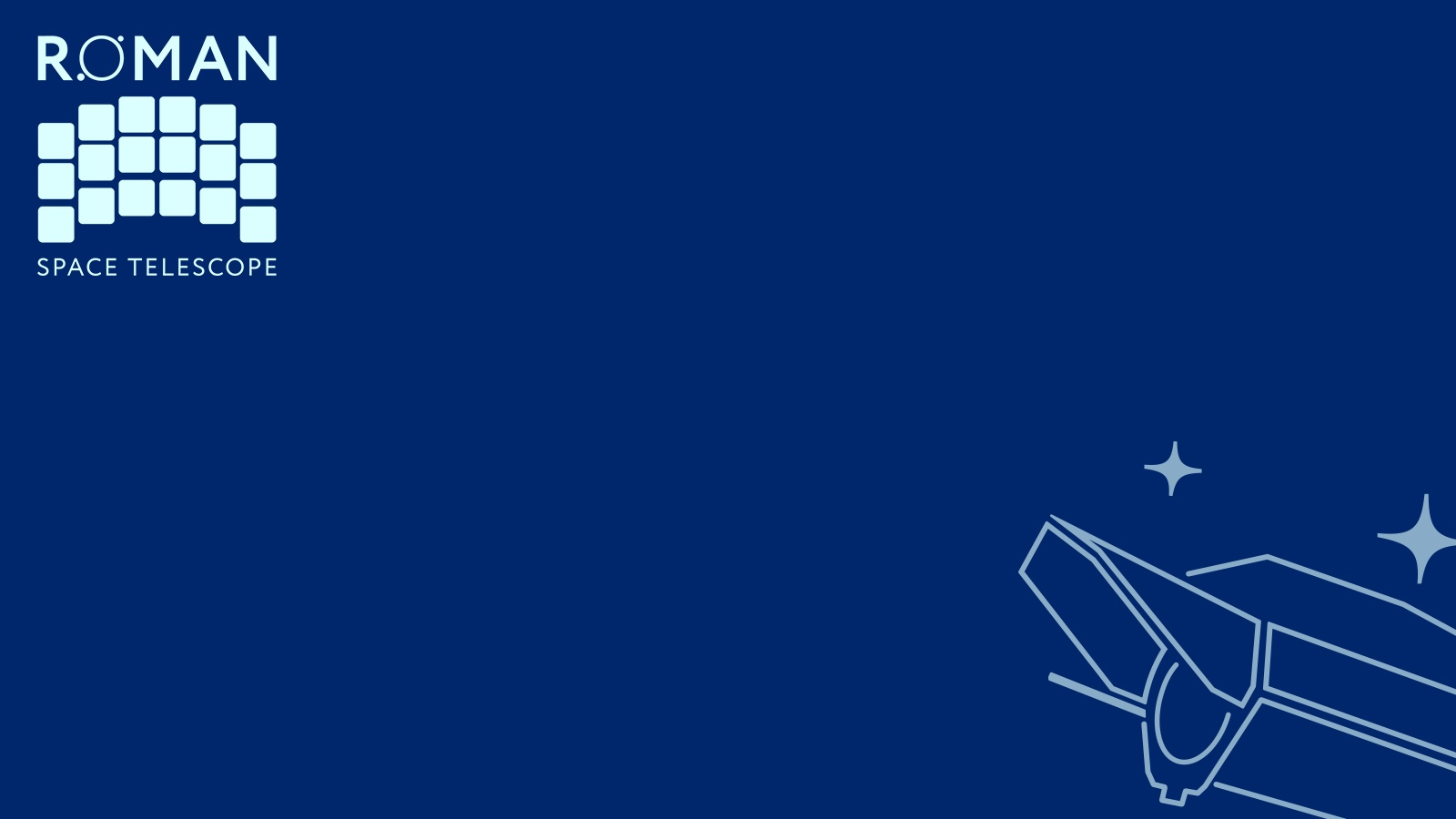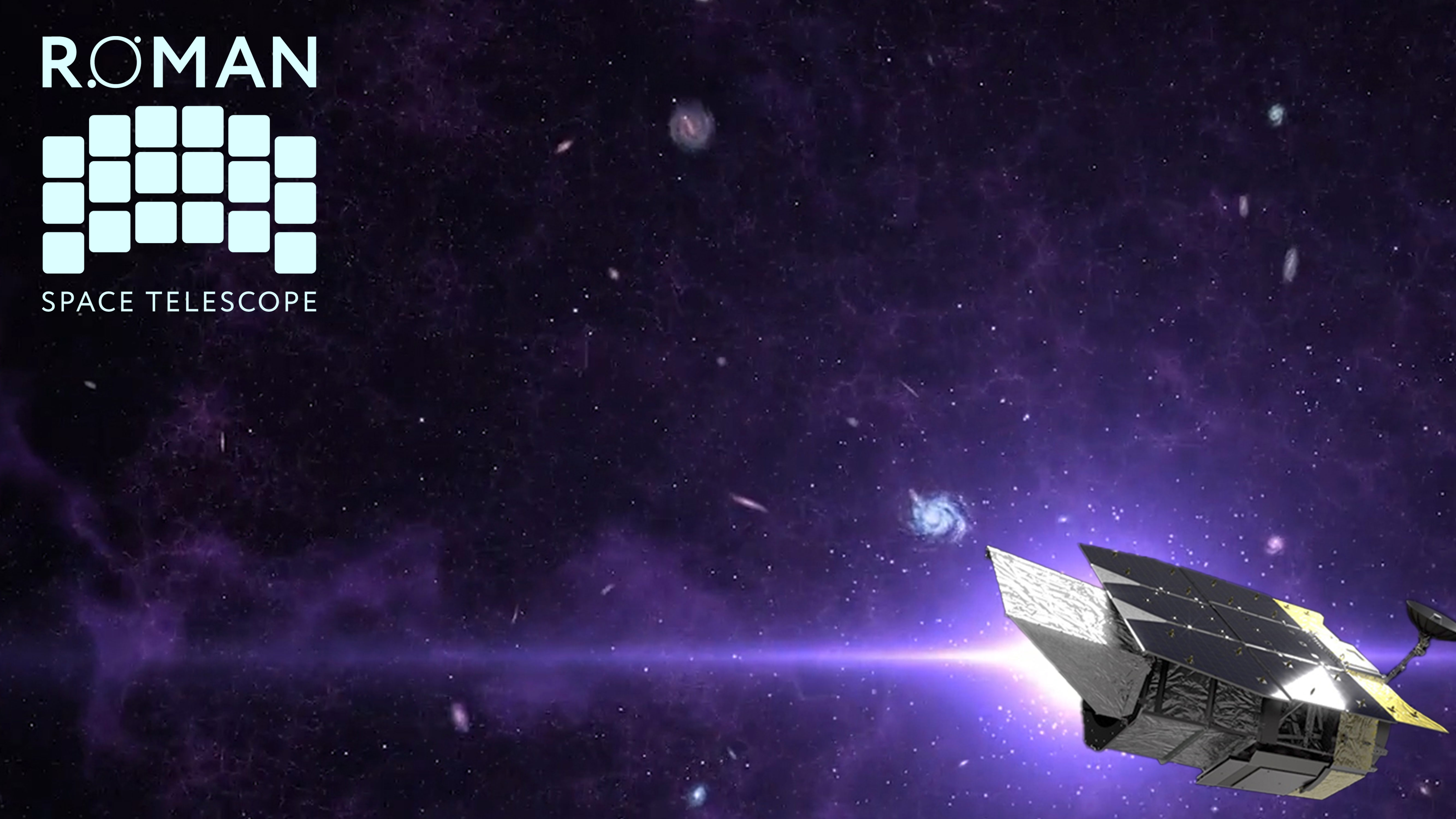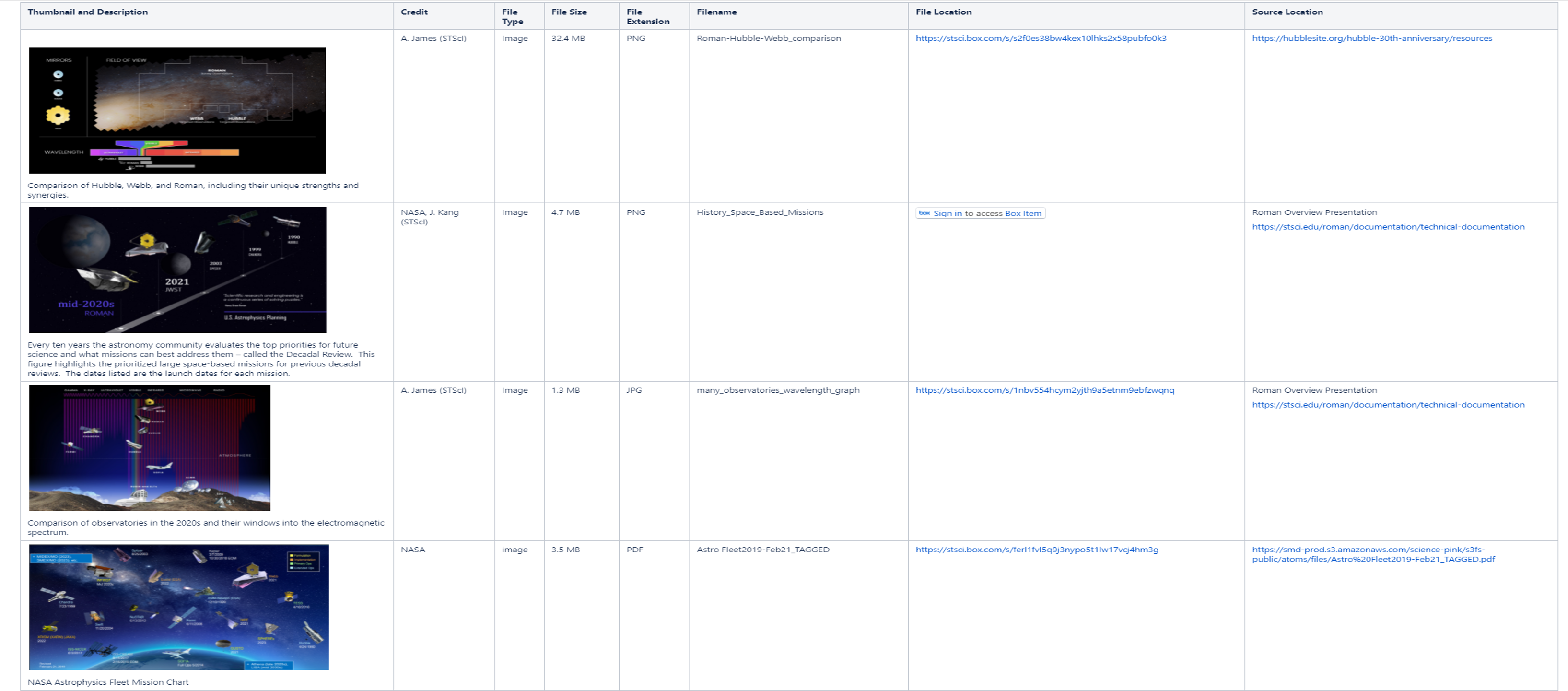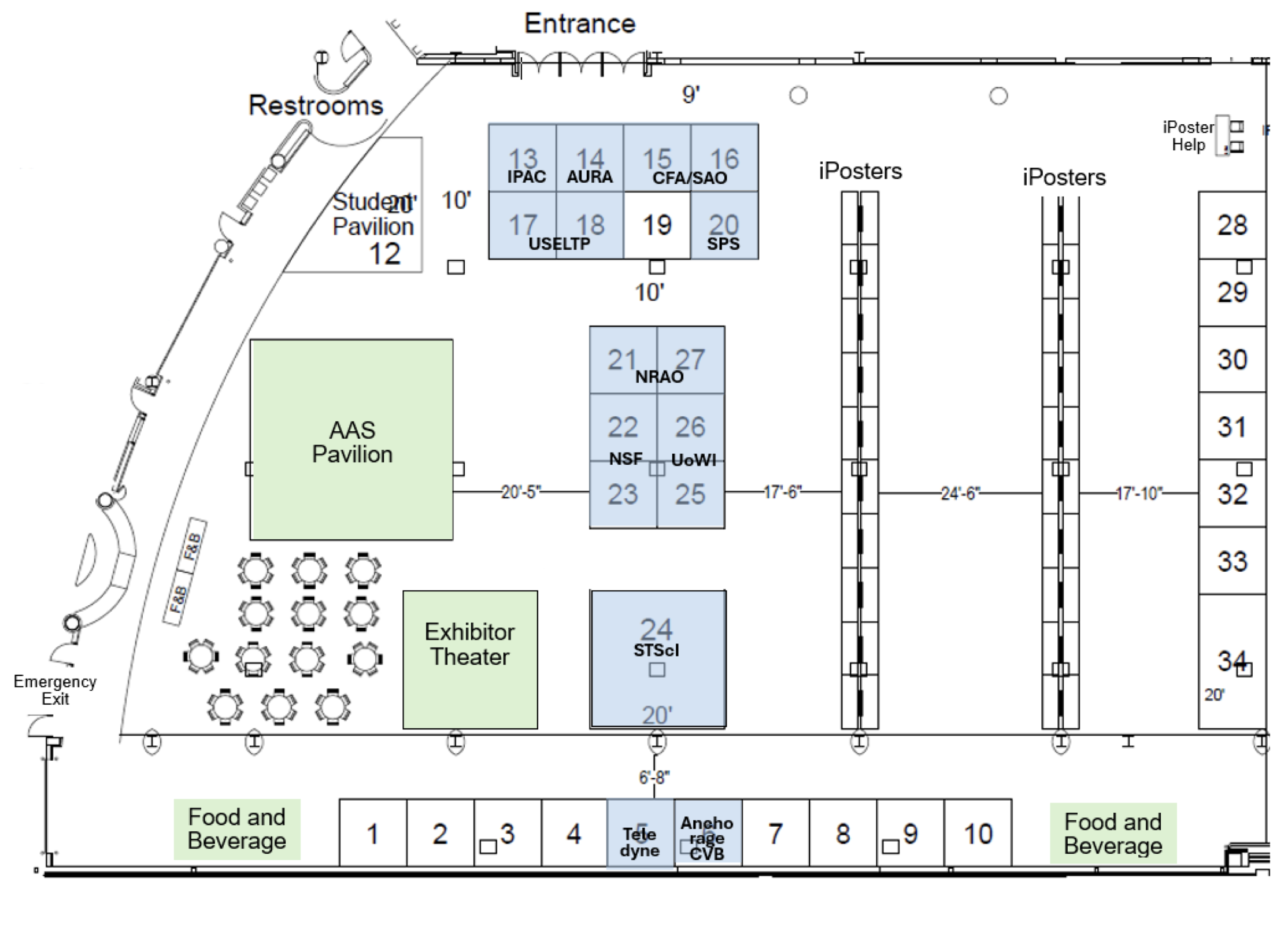Notice
If you are working on press-worthy science that relates to future Roman WFI science, we invite you to share your work with Martha Irene Saladino - saladino@stsci.edu - Education & Outreach Scientist, Roman Science Communications.
Martha I. will be at the STScI booth and will work with the Roman partners to share your exciting science with the world!
1.1. Roman Events at the 244th AAS Meeting | ||
Location | Title | Date and Time (CT) |
|---|---|---|
iPosters | ||
Room: Exhibit Hall A | iPoster: Roman Space Telescope Observing Program Implementation (127.05) | Monday, June 10, 2024 5:30pm - 6:30 pm |
Room: Exhibit Hall A | iPoster: | Monday, June 10, 2024 5:30pm - 6:30 pm |
Room: | iPoster: ROSALIA: ROman Sky Analyst for Low surface brightness Imaging & Astronomy (129.02) | Monday, June 10, 2024 5:30pm - 6:30 pm |
Room: Exhibit Hall A | iPoster: The Roman Space Telescope Science Operations Center (306.01) | Wednesday, June 12, 2024 9:00am - 10:00am |
Room: Exhibit Hall A | iPoster: Exploring the early universe with future Roman Ultra Deep Field observations (401.01) | Thursday, June 13, 2024 09:00am - 10:00am |
Town Halls | ||
Room: Exhibit Hall B | Town Hall: | Monday, June 10, 2024 12:45pm - 1:15pm |
Room: Lecture Hall | Town Hall:
| Wednesday, June 12, 2024 12:45pm - 1:15pm
|
Oral Presentations | ||
Room: Exhibitor Theater | Oral Presentation: The Roman Space Telescope Science Operations Center (Tyler Desjardins) | Wednesday, June 12, 2024 12:00pm - 12:30pm |
1.2. Roman Resources |
Welcome to the home for Roman Documentation (RDox)!Documentation for the Roman Space Telescope is currently under construction and subject to change, but represents the most up-to-date information available. |
Roman Community ForumThis is a monthly virtual meeting that provides updates on Roman mission status and plans, and an opportunity for the science community to engage with the Roman Project and Science Centers. |
Roman Virtual Lecture SeriesThe Nancy Grace Roman Space Telescope monthly virtual lecture series is run jointly by JPL, IPAC, Goddard, and STScI. These talks are open to the entire astronomy community and cover science, engineering, and technology related to the Roman mission. All are welcome and encouraged to attend. Talks are ~20 minutes with ~10 minutes for Q/A, and are scheduled for the 3rd Thursday of each month from 1-1:30 pm Pacific / 4-4:30 pm Eastern. |
NASA Roman Coronagraph Instrument Fast Facts Sheet |
Roman Virtual Backgrounds Here are a series or Roman virtual backgrounds you can use in your virtual meetings and presentations. |
Roman Slide SetThis presentation highlights the science that will be enabled by the Nancy Grace Roman Space Telescope. The presentation includes notes for the presenter and can be used as a whole or in parts. It has been updated with accessibility in mind. The presentation comes in multiple formats, found here. |
Roman Visual LibraryThe Roman Visual Library, located here, is a resource for astronomers to grab Roman-related images. You can find images, captions, credits, and image source locations here. |
Roman BrochureTargeted for launch in late 2026, the Nancy Grace Roman Space Telescope will revolutionize astronomy by building on the science discoveries and technological leaps of the Hubble and Webb space telescopes. The Roman brochure, located here, provides a simple way to express the power of Roman's field of view and is useful for all audiences. |
1.3. Come and Find Us in the Exhibit Hall! |
1.4. How to Connect With Us |
|---|
STScI (Booth 24)
STScI is Roman’s Science Operations Center (SOC). The SOC is responsible for the mission's observation scheduling system, WFI data processing system for the direct-imaging mode and the mission's entire data archive. STScI performed pre-formulation, formulation, and design activities for Roman starting in 2014, and continues its role in science operations system engineering, design, science research support, and scientific community engagement and public outreach.
Contact us with questions
The Roman Help Desk is operated joinly by the SOC and the SSC. Contact the SOC helpdesk for questions about SOC tools, WFI imaging, data calibration and archiving, proposal planning and scheduling.
Caltech/IPAC (Booth 13)
IPAC is home to the Roman Science Support Center. IPAC is responsible for Roman’s Coronagraph Instrument operations, high-level data processing of grism and prism data from the Wide Field Instrument (WFI), high-level data processing of WFI microlensing survey data and community engagement for Roman exoplanet science and wide field spectroscopy. IPAC will also implement the proposal solicitation and grant management for the General Observer, Guest Investigator and Theory programs, curate telescope instrument and simulation efforts and engage the greater scientific community in preparing for science with Roman.
Contact us with questions
The Roman Help Desk is operated joinly by the SOC and the SSC. Contact the SSC helpdesk for questions about WFI spectroscopy, microlensing data processing, the proposal submission and review process, and the coronagraph.
1.5. Future Conference - Be Sure to Mark Your Calendars! |
|---|
How Roman Observations Will Confront Theory
https://conference.ipac.caltech.edu/roman2024/
Dates:
July 9 - 12, 2024
Location:
Caltech/IPAC campus
Description:
The goal of this 4-day conference is to bring together inclusively members of the community to discuss how observations with the Nancy Grace Roman Space Telescope will confront and challenge theories, from exoplanets to the edge of the Universe. The conference will focus mainly on the Core Community Surveys -- the Galactic Bulge Time Domain Survey, High Latitude Wide Area Survey, and High Latitude Time Domain Survey, which will occupy the majority of the primary mission -- as well as the Coronagraph Instrument technology demonstration. However, there are boundless theories that will also be addressed and tested by the wide variety of General Astrophysics Surveys. This conference, to take place on the Caltech campus and online, will be an active and exciting confluence of both observers and theorists to outline the potential breakthroughs that could be made possible during the lifetime of the Roman Space Telescope.
If you have any questions, you can email us at romanssc@ipac.caltech.edu .
